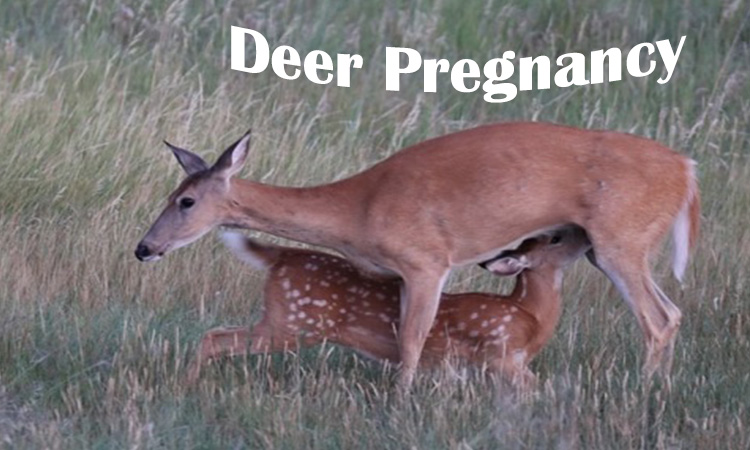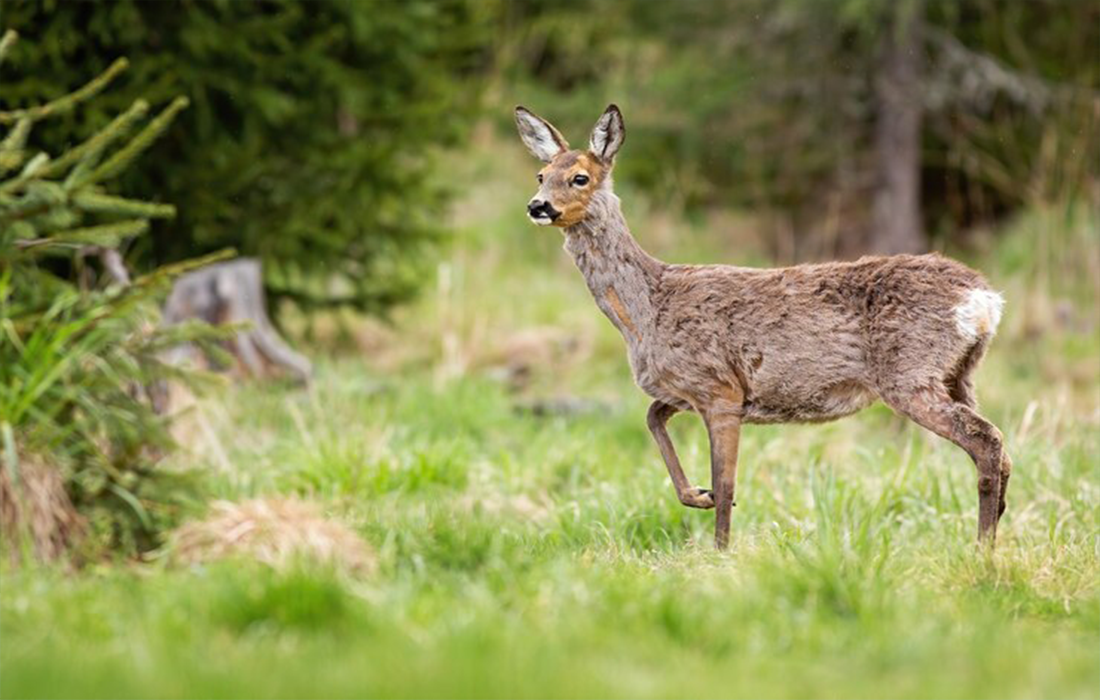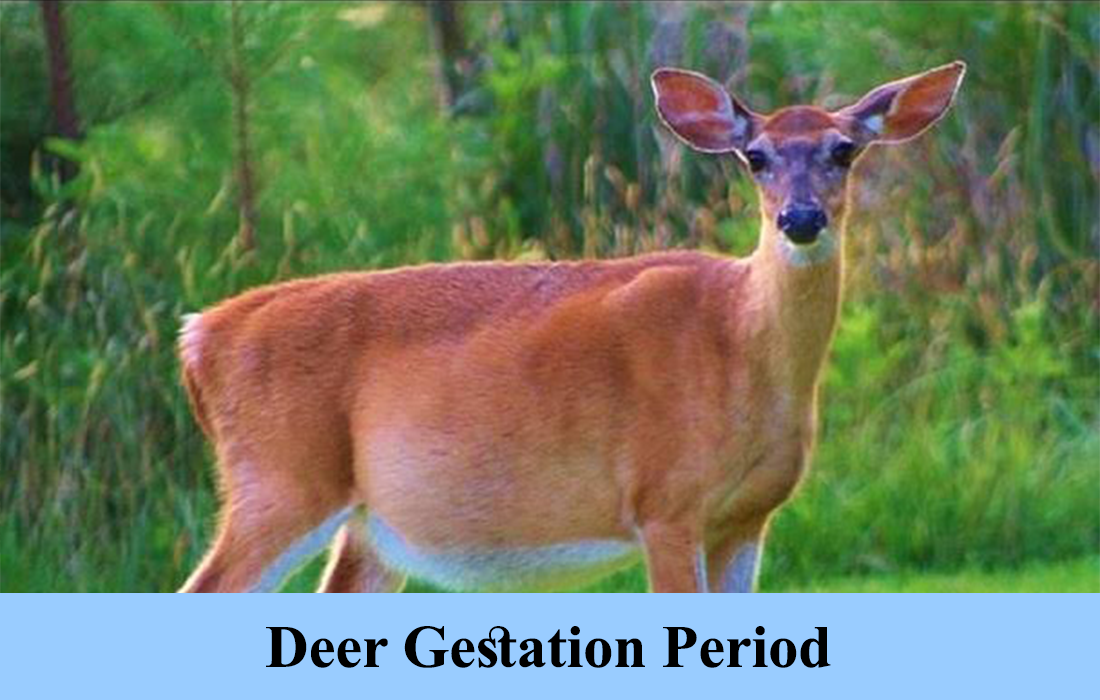In wildlife’s enchanting domain, deer represent the majesty of grace and resilience. Nevertheless, amid their graceful manner is a biological wonder – their gestation period. It is a testimony to nature’s complexity and the mystery of adaptation. These animals range from white-tailed species to mules and engage in a pregnancy journey that captures one’s imagination. (Refer – Other Animal Gestation Period)
But how long do deer stay pregnant? Through this question, we can explore further the reproductive cycles of these animals. In this blog, we examine deer gestation periods as well as discover some secrets behind their reproductive processes. Right from the beginning stages of fertilization to when they finally give birth to young ones, we will be taking you through all that entails for pregnant deer.
Walk with us in unlocking one of mother nature’s most incredible phenomena. By keen observation and scientific research, the duration and intricate details are meant to be unveiled about gestation among deers. Now sit your back straight while we start our expedition into the wild and beautiful world of deer reproduction. How long do Deer Stay Pregnant? Let us find out together below!
Deer Reproductive Cycle
In the realm of forests and meadows, deer follow their reproductive cycle – an orchestration of courtship, conception and parturition. How Long Does A Deer Stay Pregnant? Why ask this? It is the key to unlocking the step between reproduction and birth. However, before we consider the complexity of pregnancy let’s journey through what shapes their existence.
From violent rutting to placid birthing grounds, these particular stages are moments in the life cycle of deer that matter most. In this article, you will come across sections about mating rituals ovulation patterns and physical changes during pregnancy. By way of observation assisted by science, we shall make sense out of myths associated with deer gestation thus creating an understanding on factors affecting its length.
Enter into a wild land where every step reveals a tale about survival and adaptation. Let us therefore learn about the secrets behind deer reproduction while exploring the elegance and tenacity depicted by these animals.
How Long are Deer Pregnant?
This question may seem simple, but it is the beginning of an exciting trip through life inside a doe. In general, gestation in deer lasts about 200 – 205 days; however, this may vary due to environmental factors, nutrition and genetics.
Understanding deer pregnancy intricacies will explain some pretty exceptional adaptations that enable them to live successfully in their natural habitats. Follow us now as we take you further into understanding how deer gestation works and unveil other mysteries of this captivating part of their life cycle.
Deer Fetal Development
The fetal development in deer is a fascinating journey that reflects the marvel of Mother Nature’s hands. Each phase begins with conception and ends with the birth of new life, unfolding meticulously and elegantly. The tiny embryo turns into a fully-formed fawn as gestation goes on.
Organs vital to future growth and development are already under construction early in pregnancy. As the fetus matures, the skeletal system strengthens while muscle mass increases as it prepares for its eventual emergence from the womb. Furthermore, throughout this time, the mother provides nutritional necessities and protection for her unborn child with unconditional love.
Understanding fetal development intricacies gives us insight to deer gestation period duration and progression. Every milestone such as gentle movements felt towards end of pregnancy or faint heart sounds heard during an ultrasound examination makes one realize that indeed it is a miracle to see life developing within the uterus.
Deer Birthing Season
The birthing season of deer is the period of anticipation and renewal for nature which usually falls between late spring and early summer. Doe goes to secluded areas to give birth away from predators hence making nests. With plenty of spring vegetation, this time is synchronized so as to provide enough food for new fawns.
First tentative steps by newly born fawns are taken with mothers leading them in the woods where leaves rustle softly; the beginning of life’s vulnerability coupled with resilience. In due course, summer comes to an end thus leaving behind numerous beings that start their lives in the wild, ready for generations yet unborn, a token of nature’s cyclic pattern.
Deer Offspring
When a deer gives birth, her young’s appearance is always fascinating and captivating as far as life in the wilderness is concerned. They represent hope and beauty in the world of animals because they are born during this time of year.
At first, they are very delicate not able to feed themselves or protect themselves from danger, therefore depending entirely on their mothers. Fawns’ soft skin with spots helps them appear like grass so that they can blend with their surroundings and escape predators. During their development stage, these fawns take steps around their habitats learning important things like how to obtain food through foraging and also how to relate with other members of its species.
Fawns may appear weak but have natural instincts that help them adapt well and hence survive well in their own natural habitat. On a daily basis, they grow and become independent changing from being dependent upon their mothers into self-reliant creatures.
As the adult offspring grow up into adulthood, they join the rest of the herd serving as key players in the survival strategies within deer population dynamics. Their journey symbolizes a certain kind of strength in nature since despite being born helpless it barely takes no time for them to survive even under such circumstances.
Also Read - Bear Pregnancy Length | Learn about Bear Gestation Period.
Factors That Affect Deer Pregnancy Length
Deer pregnancy duration depends on numerous factors that cause diverse gestation periods in different individuals and populations. The first of these is the deer species, which has a significant impact as far as the period of gestation is concerned because certain species such as whitetail deer, mule deer, and elk may have different gestation lengths.

Additionally, environmental conditions play an important part because climate conditions, habitat quality and food availability affect the growth and health of the fetus. This also comes into play when it comes to nutrition since a well-fed doe may experience shorter periods compared to her counterpart with limited resources of food. Prolonged gestation time can be controlled by genetics through specific genetic traits involving parturition timing.
Lastly, stress levels in addition to other physiological factors may lead to longer pregnancy durations or even miscarriages among deers. As a whole, this reveals how complicated their reproduction is and what they have done to live successfully in different natural habitats.
The Reproductive Cycle in Deer
The complicated and captivating reproductive cycle of deer is influenced by both biological and environmental factors. Males compete to mate with females through dominant display and courtship rituals in the rut, which marks the beginning of their mating season. Once fertilization has occurred, the zygote implants itself in the uterus of a doe triggering pregnancy.
The length of gestation varies from one species to another; for example, White-tailed deer usually have a 200-day gestation period while that of mule deer goes slightly beyond this period. During pregnancy, physiological adaptations occur within the doe to support fetal growth until parturition occurs which does give birth to fawns in secluded areas.
Does take care of their young ones by nursing them till they are old enough to live on their own as members of other deers in the community. The reproductive cycle keeps deer alive and contributes to biodiversity among other things on earth.
How Long Are Deer in Labor?
Usually, doe labor, also known as delivery, lasts for several hours; however, the time span varies depending on the doe’s health state, fetus condition and size as well as environmental conditions. Deer labor generally takes between 30 minutes and a few hours.
During this process, a doe may look uncomfortable by being restless, vocalizing or lying down and standing up repeatedly. As parturition advances, the cervix of the doe dilates to enable expulsion of the fawn. After birth, the dam typically licks its newborn clean before encouraging it to stand and suckle.
Even though deer labor is quite short when likened to that of other mammals, it is an intricate and significant event that brings forth pregnancy end and commences mothering in relation to the neonate fawn.
Deer Pregnancy Diagnosis
Diagnosing pregnancy in deer involves physical examination, behavior observation and sometimes additional testing. In captive deer herds, veterinarians and wildlife biologists may employ palpation, ultrasonography or hormone testing to suggest the existence of pregnancy.
To determine how the uterus or fetus has changed, palpation involves putting your hands on a deer’s stomach. Ultrasonography employs sound waves to take pictures of what is inside a deer’s belly so that they can see how the fetus is growing. Rabbits and deer are some type of animals that have this kind of vision.
Additionally, hormonal tests such as progesterone levels analysis can confirm whether an animal is pregnant or not by examining blood samples usually taken from the venous plexuses found in their recta for venous access and fecal samples used to examine their excrements.
Mating behavior change accompanied by “obvious” differences such as weight gain on the doe’s part along with an enlarged udder are simple signs revealing childbirth in wild populations of deer. Overall, accurate diagnosis of pregnancy in deer is necessary for monitoring population health status as well as breeding success rates among other factors pertinent in both captive and wild environments too.
Deer Species and their Gestation Period
| Species of Deer | Gestation Period | Geographical Distribution |
| Whitetail Deer | 200 – 205 days | North and South America |
| Mule Deer | 200 – 210 days | Western United States |
| Roe Deer | 280 days | Europe and Asia |
| Red Deer | 225 – 250 days | Europe, Asia, New Zealand |
| Sika Deer | 210 – 300 days | Asia, Europe, North America |
| Fallow Deer | 230 – 240 days | Europe, Asia, North America |
| Reindeer/Caribou | 225 – 240 days | Arctic and Subarctic regions |

Care and Nutrition For a Pregnant Deer
It is important that the person taking care of a pregnant deer acknowledges their responsibility to provide good nutrition, clean water, and reduce stress. While pregnancy necessitates extra nutrients for fetal development and lactating, deer have higher nutritional needs than when not pregnant.
Fresh grass, high quality hay, deer specific pellet feeds, etc., are examples of several useful possibilities. Moreover, when it comes to hydration or general health it is very vital to have clean water available. Furthermore, these include; predators loud noises and rough handling among others which could harm the deers could lead to complications even death in some cases.
Moreover putting in place appropriate measures during the gestation period such as regular monitoring by either vet or wildlife biologist will ensure proper care for the deer with immediate addressing of any signs of illness or discomfort. Therefore vigilant care plus correct feeding are important in supporting pregnant deer’s healthiness as well as guaranteeing successful birth outcomes.
Also Read - How Long are Hyena Pregnant? Learn about their pregnancy period and diet to follow.
FAQ
Factors that influence the duration of deer pregnancy
The length of deer pregnancy can be affected by various factors like doe’s old age, well-being, presence of food and water bodies and weather conditions such as temperature.
When do most deer give birth?
From May to July, deer give birth while the specific times may vary depending on kind and location.
How can you know if a deer is pregnant?
Pregnancy has slight physical signs in deer which are really hard to see. The most accurate way to determine whether or not they are carrying young is through ultrasound or blood tests.
When can a female deer be spayed after giving birth?
Female deer can be spayed subsequent to parturition once they are weaned, often months later. The mother should regain strength before proceeding so as not to jeopardize her safety or that of her kids.
Why Is Good Nutrition Important For Pregnant Deers?
For the baby’s development and doe’s well-being, nutrition matters. Adequate calcium supply and protein intake on diet help towards a successful pregnancy period.
Conclusion
Deer are fascinating animals with unique breeding seasons, deer pregnancy lasts for different periods and the gestation period of white-tailed deer is shorter than that of mule deer. The embryo undergoes a number of developmental steps in the womb of the mother. Fawns have spots and no scent to attract predators at birth. This information regarding reproduction activities is confusing.

